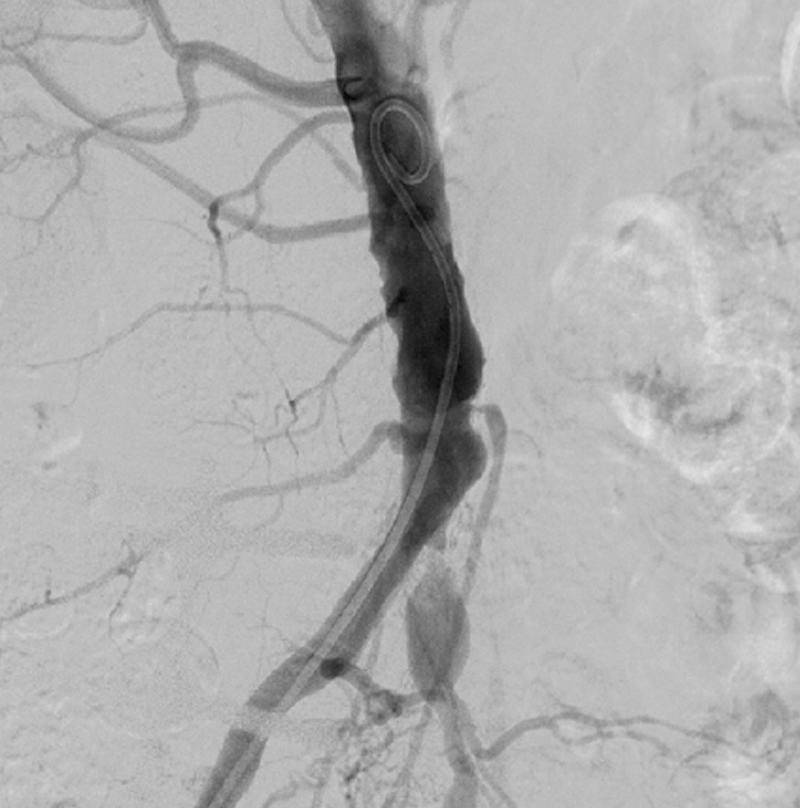Volume 31, Nº 2, March/April 2018
DOI: http://www.dx.doi.org/10.5935/2359-4802.20170099
ORIGINAL ARTICLE
Prevalence of Atherosclerotic Lesions in the Left Internal Thoracic Artery, Evidenced by Selective Angiographic Findings
Hadrien Felipe Meira Balzan
Rafael Vinicius Lube Battilani
Otávio Celeste Mangili
Marcos Franchetti
Leonardo Celeste Mangili
Julio de Paiva Maia
Dorane Dias de Moura
Bruna Felipe de Melo Lage

Figure 5 – Aorta with suboclusive atherosclerotic lesions
Abstract
Background: By observing the high prevalence of failures in the surgical treatment of myocardial revascularization (MR), with the use of the Left Internal Thoracic Artery (LITA) as a graft, evidenced by the international literature, it was sought to demonstrate the prevalence of lesions that would not allow the use of LITA as a graft in myocardial revascularization surgery, with possible alteration in the surgical management performed by the cardiac surgeon, and reduction of the morbimortality of these patients.
Objectives: To evaluate the prevalence of atherosclerotic lesions of the LITA, through selective preoperative angiography, in patients submitted to coronary angiography and indicated for myocardial revascularization. We also analyzed other lesions that made the use of LITA unfeasible as a main graft in cases of myocardial revascularization surgery (MRS).
Methods: This was a cross-sectional, prevalence study that evaluated, through selective angiography, the LITA of 39 patients with a median age of 63 years, submitted to coronary angiography, with indication of Coronary Artery Bypass Graft (CABG). Categorical variables were compared by chi-square test and Fisher's exact test. The single continuous variable, age, was tested for normality by the Kolmogorov-Smirnov test, described in median (P25; P75) and the groups compared with the Mann-Whitney test. The level of statistical significance adopted was p < 0.05. The analyzes were performed in SPSS® software version 20.
Results: It was identified the presence of 7.7% of disorders in the LITA that made it unfeasible to be used. In all of the patients there was no specific symptomatology evidencing the lesion. No variable was shown as a predictor for the occurrence of the outcomes.
Conclusion: The prevalence of the lesions found in the study was significant, indicating that a preoperative evaluation of LITA could bring future benefits to the patients submitted to CABG. (Int J Cardiovasc Sci. 2018;31(2)97-106)
Keywords: Atherosclerosis; Myocardial Revascularization; Mammary Arteries; Coronary Angiography











